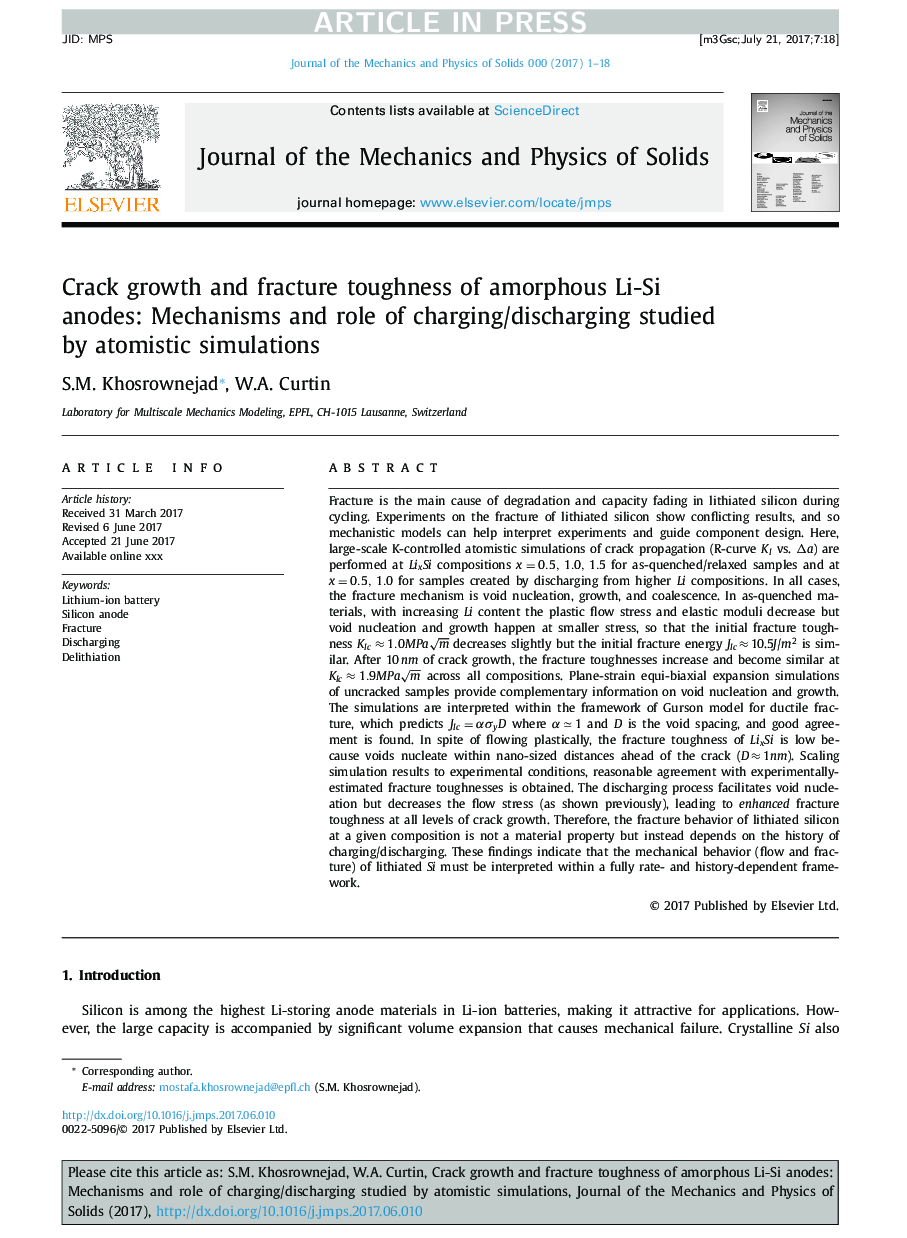| Article ID | Journal | Published Year | Pages | File Type |
|---|---|---|---|---|
| 5018191 | Journal of the Mechanics and Physics of Solids | 2017 | 18 Pages |
Abstract
Fracture is the main cause of degradation and capacity fading in lithiated silicon during cycling. Experiments on the fracture of lithiated silicon show conflicting results, and so mechanistic models can help interpret experiments and guide component design. Here, large-scale K-controlled atomistic simulations of crack propagation (R-curve KI vs. Îa) are performed at LixSi compositions x=0.5,1.0,1.5 for as-quenched/relaxed samples and at x=0.5,1.0 for samples created by discharging from higher Li compositions. In all cases, the fracture mechanism is void nucleation, growth, and coalescence. In as-quenched materials, with increasing Li content the plastic flow stress and elastic moduli decrease but void nucleation and growth happen at smaller stress, so that the initial fracture toughness KIcâ1.0MPam decreases slightly but the initial fracture energy JIcâ¯ââ¯10.5J/m2 is similar. After 10ânm of crack growth, the fracture toughnesses increase and become similar at KIcâ1.9MPam across all compositions. Plane-strain equi-biaxial expansion simulations of uncracked samples provide complementary information on void nucleation and growth. The simulations are interpreted within the framework of Gurson model for ductile fracture, which predicts JIc=αÏyD where αâ¯ââ¯1 and D is the void spacing, and good agreement is found. In spite of flowing plastically, the fracture toughness of LixSi is low because voids nucleate within nano-sized distances ahead of the crack (Dâ¯ââ¯1nm). Scaling simulation results to experimental conditions, reasonable agreement with experimentally-estimated fracture toughnesses is obtained. The discharging process facilitates void nucleation but decreases the flow stress (as shown previously), leading to enhanced fracture toughness at all levels of crack growth. Therefore, the fracture behavior of lithiated silicon at a given composition is not a material property but instead depends on the history of charging/discharging. These findings indicate that the mechanical behavior (flow and fracture) of lithiated Si must be interpreted within a fully rate- and history-dependent framework.
Related Topics
Physical Sciences and Engineering
Engineering
Mechanical Engineering
Authors
S.M. Khosrownejad, W.A. Curtin,
